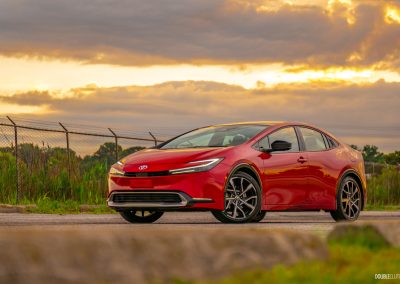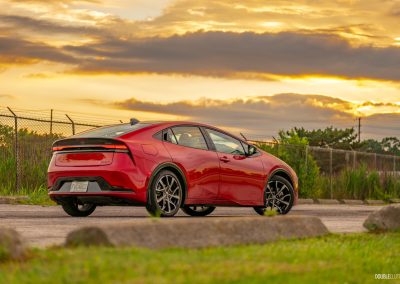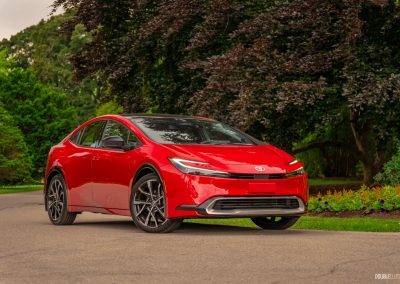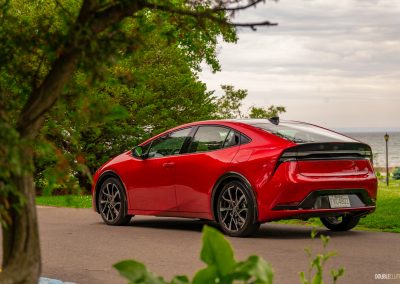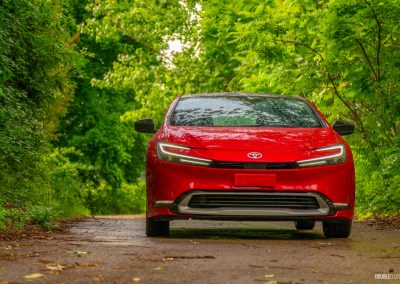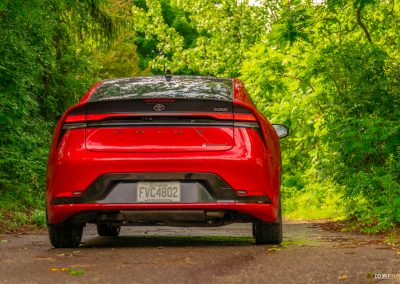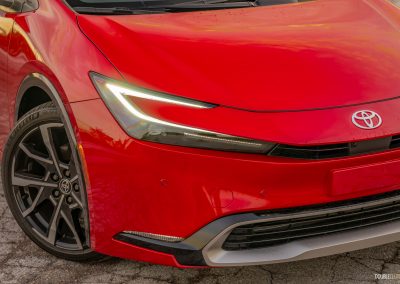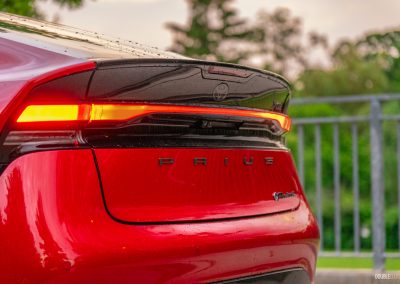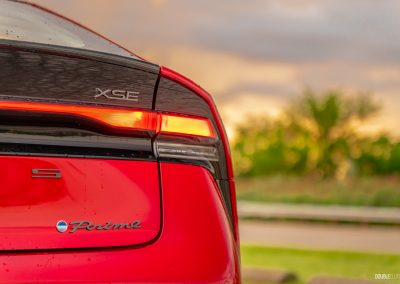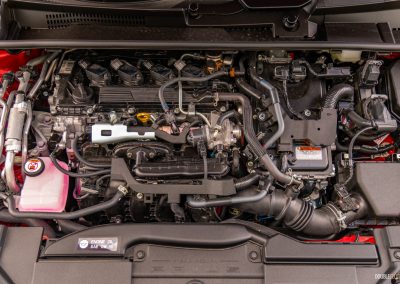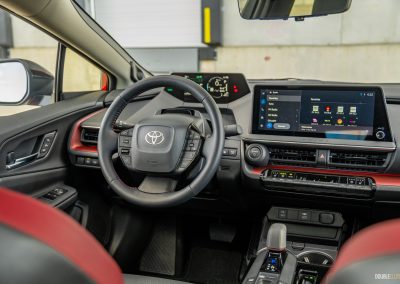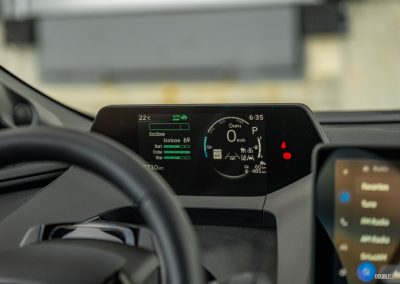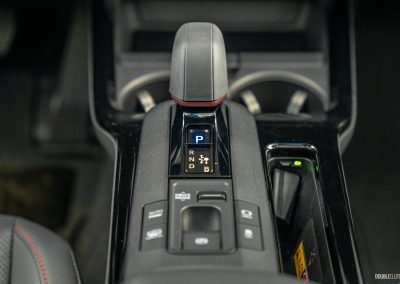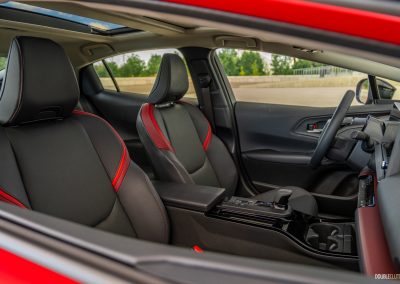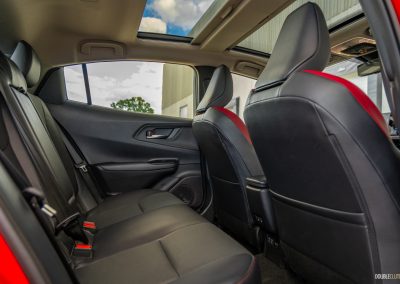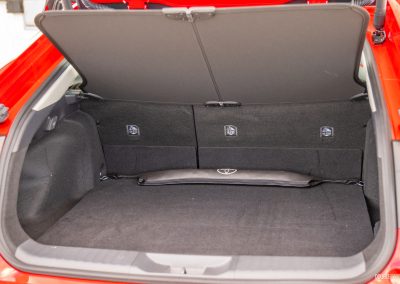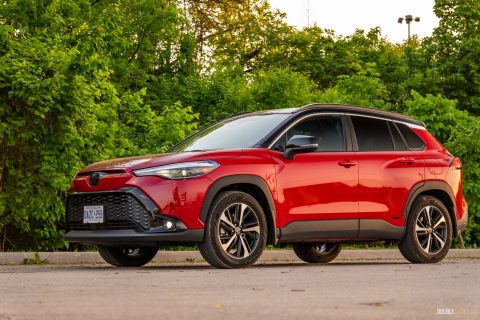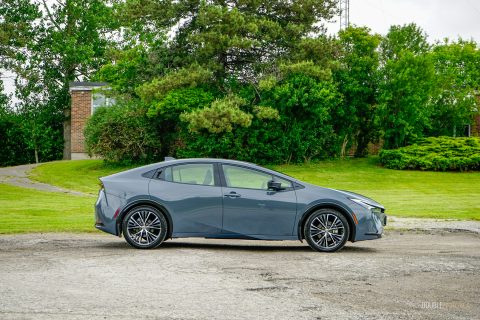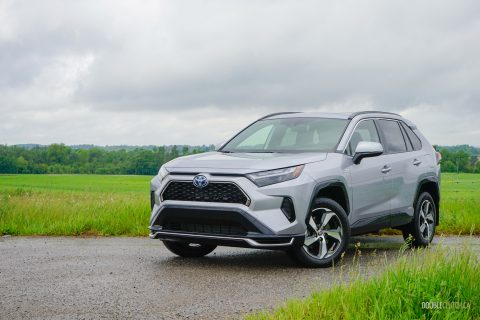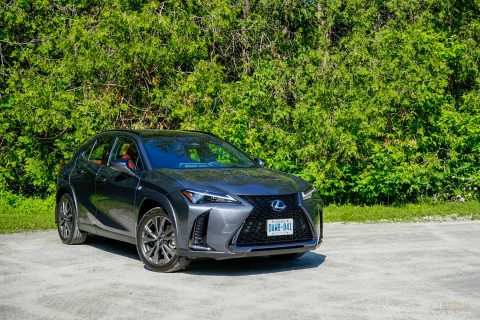When I first saw this new Prius at the Los Angeles auto show in 2022, the entire building was buzzing. Southern California used to be the Prius capital of the world, where the quirky little Toyota became the Hollywood poster-car for environmental consciousness. It reigned supreme until it became too, um, quirky to be fashionable. With this re-introduction, it’s suddenly no longer the butt of the joke, as seen on the 2024 Toyota Prius Prime I had this week.
It’s a slick looking car now, low and wide, with a dramatically raked windshield; a far cry from its too-aerodynamic-for-its-own-good predecessor. The Prius launched the new corporate styling language that’s since migrated to Toyota’s flagship Crown vehicles, and it’s bled over to the handsome new Camry, too. Our loaded tester’s Supersonic Red paint does a terrific job accentuating its slinky sheetmetal, and its sharp two-tone 19-inch wheels tie together the body’s black accents. It’s all a cohesive, athletic style — which I never thought I’d ever say about a Prius.
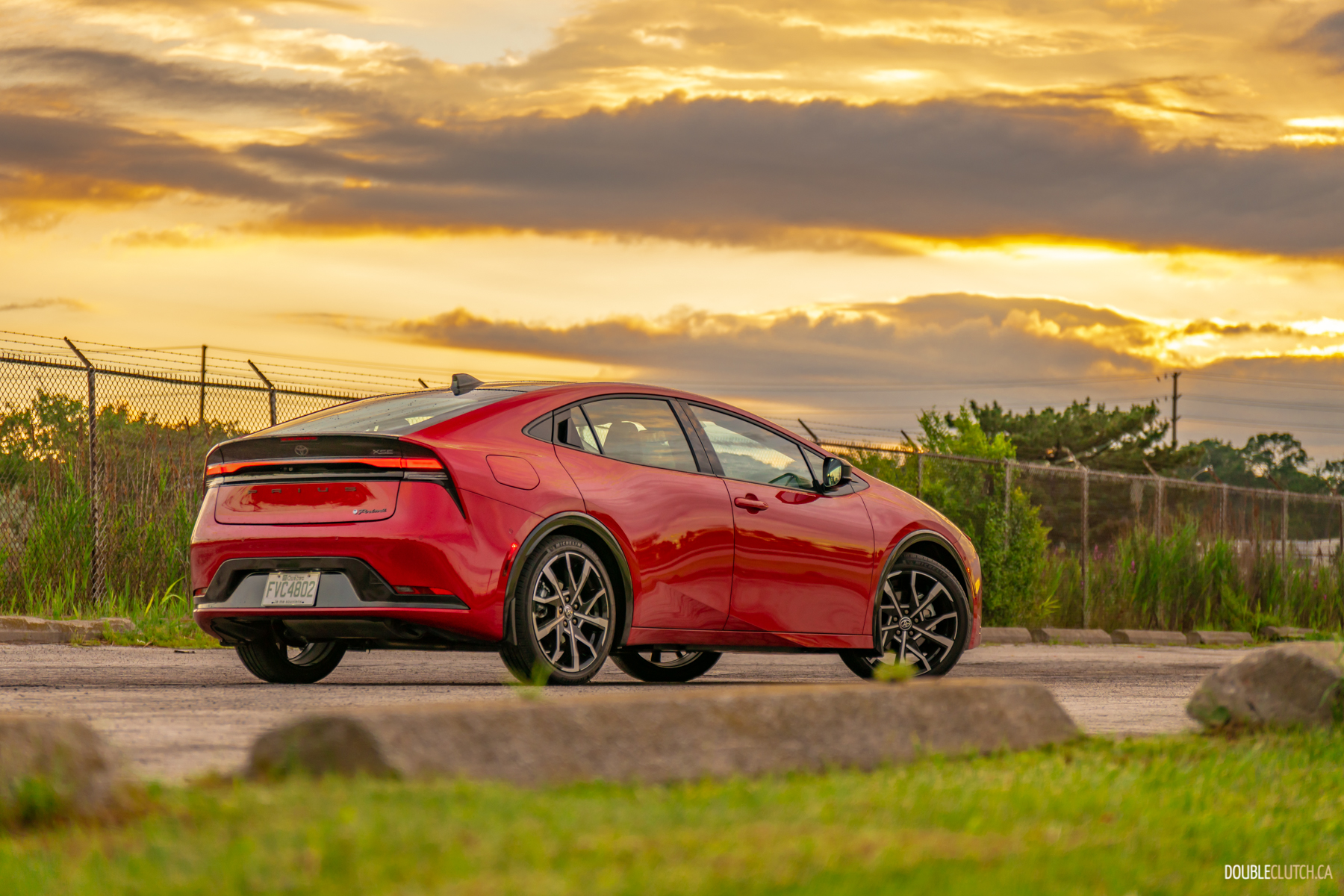
The Prius’ cabin was subject to a similarly significant renovation, laying the path for the clean and modern aesthetic that’s since set the tone for the Lexus-esque Crown. Whereas Toyotas of the past used to maybe give off a whiff of low effort with their uninspired style, the Prius ushered in a new look that’s been a hit on every vehicle on which it’s been deployed since.
Every surface feels of quality, every switch and stalk feels sturdy and satisfying, there’s a healthy amount of storage in the centre console and door cards, and the tech looks and feels thoroughly modern. Wireless Apple CarPlay and Android Auto are standard and work well on the crisp and snappy 12.3-inch infotainment touchscreen. There’s another, smaller screen mounted high on the dashboard that makes up the gauge cluster, and I’m not a fan of it. It’s too busy, with too many icons positioned in such a way that it’s always partially blocked by the steering wheel.
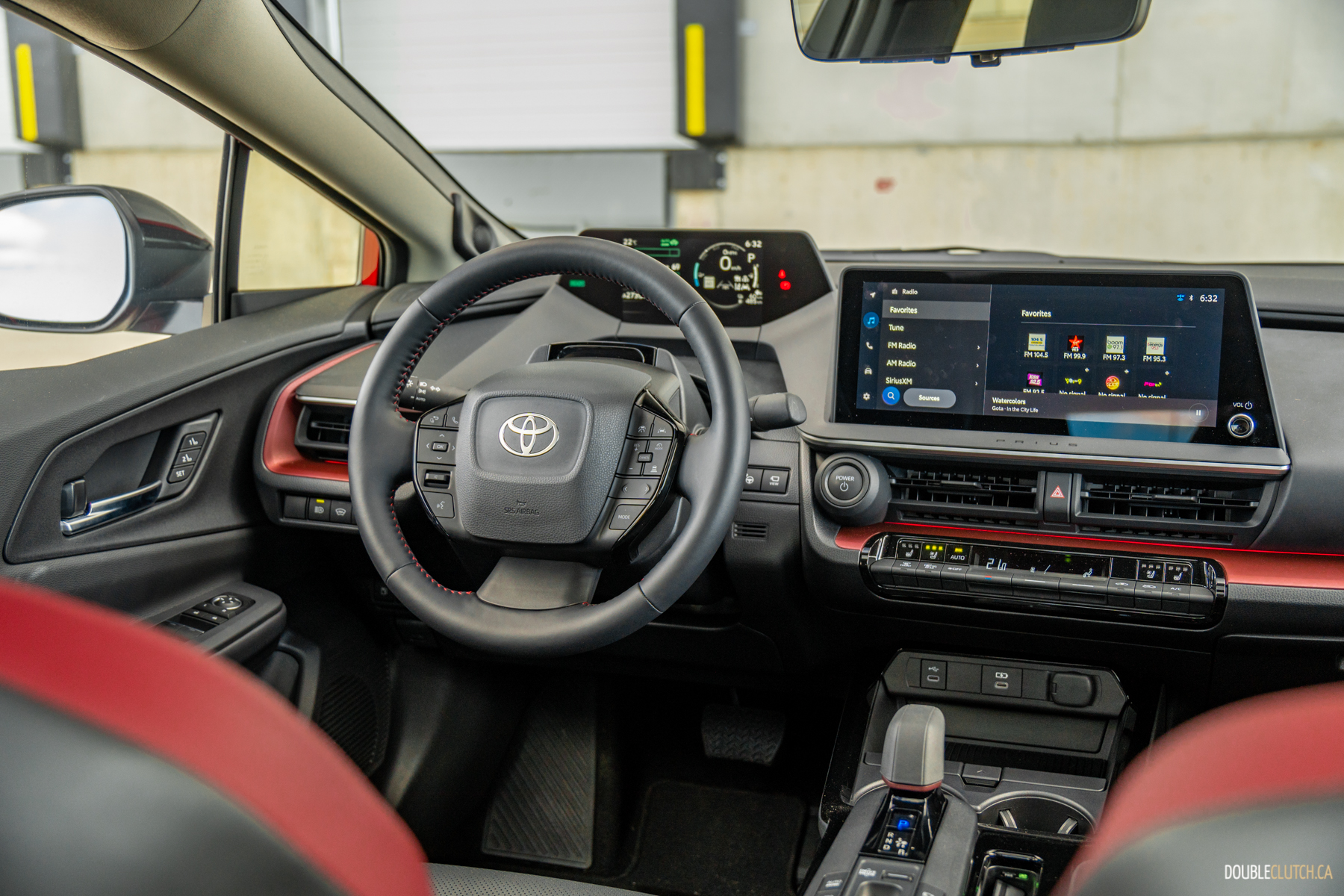
Speaking of, the Prius’ steering wheel is one of the most visually awkward in any car right now. Toyota seemed inspired by the cars of the 1980s with a bevy of buttons on there. It’s small, which is fine, and leather-wrapped, which is nice, but there’s a lot of buttons on that helm and it doesn’t help that it’s so small. This actually works very well once you’ve had some time to become acquainted with it, but at first blush, it’s a little daunting. Still, I feel bad complaining about that because I’m constantly harping on manufacturers for replacing physical buttons with glossy haptic feedback controls. Then I turn around and harp on Toyota for utilizing the exact kind of matte-finished, haptically sound buttons that I say others should be using.
Another quirk about this Prius that I struggle with is the shape of the greenhouse. Its steeply raked windshield affects cabin space. The Prius otherwise feels pretty spacious and airy, it’s commodious up front and offers a decent amount of legroom in the rear, and there’s a good amount of cargo space out back. But that nearly horizontal front glass can really create problems if you’re even slightly tallish. I feel bad complaining about this, too, because otherwise it would look like the last car — ugh — or be another generic crossover. Double ugh.

Where the Prius has excelled in perpetuity is its novel hybrid powertrain. It’s always been seamless and remarkably thrifty on fuel. There was a phase back when the Prius was popular where people would install a charge port to make them plug-in hybrids — much to Toyota’s ire at the time; they were really trying to distance the Prius from the idea of plugging in — and now the Prius Prime offers that capability from the factory. It’s far more well-realized than those aftermarket conversions.
The Prime Prius is powered by a 2.0-litre Atkinson-cycle four-engine. It develops 160 horsepower alone, and then a generator integrated into its CVT plus a standalone motor pitch in, all producing a combined 220 horsepower routed to the front wheels. It doesn’t sound like much, but it’s a hell of lot more than its predecessors, and it’s surprisingly quick. It scoots from zero to 100 km/h in seven seconds. I was going to say it won’t set your hair on fire, but if you’re accustomed to past Prii, it might.
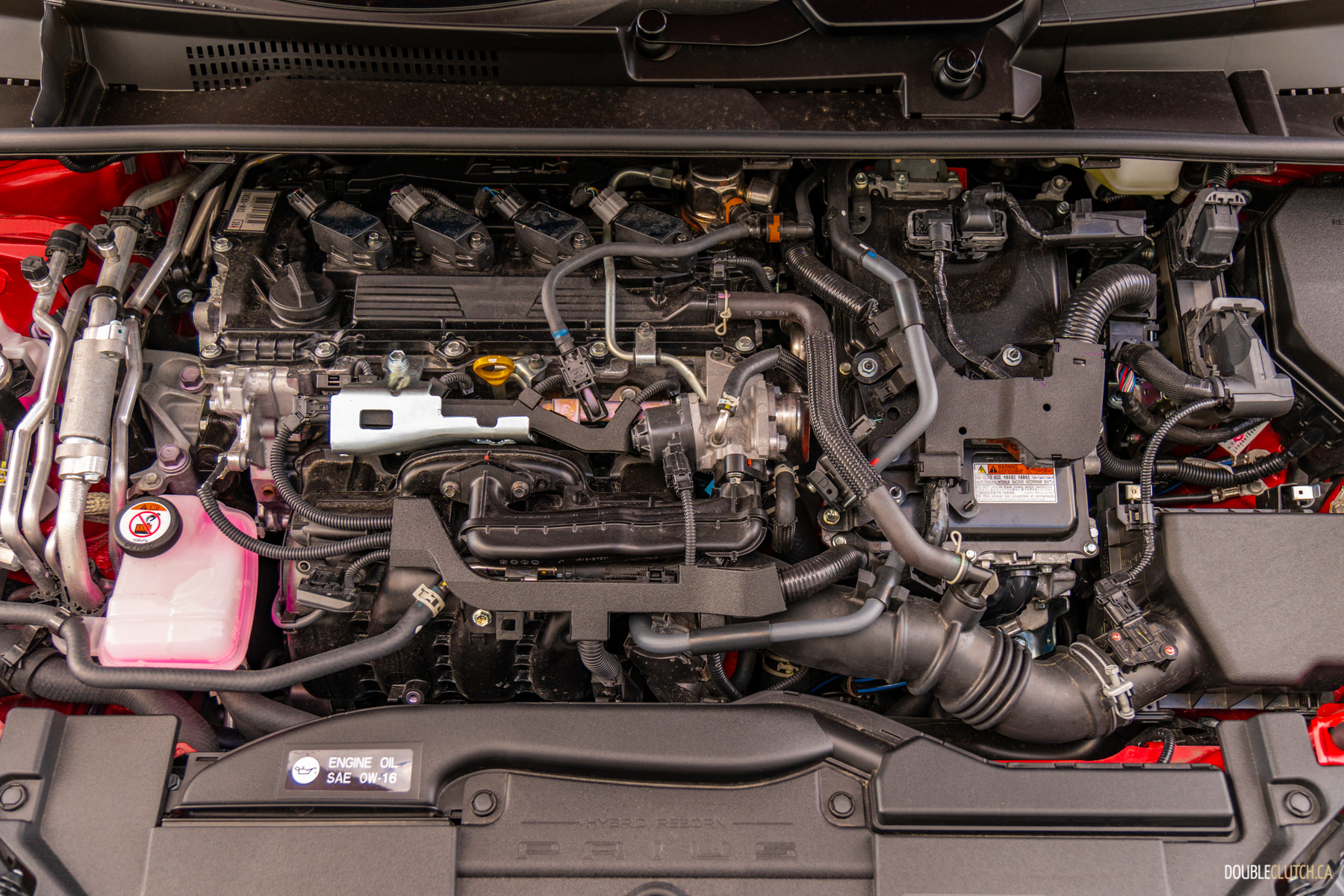
The Prius’ electric motor is motivated by a 13.6 kWh battery, good for about 60 kilometers of EV-only range. It can also be fully charged from a conventional 110-volt power outlet in five and a half hours. In my week with it, I observed an average fuel use of 2.8 L/100 km, and it hardly used the gas engine over my 50-kilometre round-trip commute thanks to keeping the battery topped up at work. It’s quick, it’s quiet, it feels natural, it’s able to function as a dedicated EV 95 per cent of the time, and range anxiety is a non-issue. This level of flexibility and efficiency is pretty well unmatched at any price.
This is why Toyota is so steadfast that plug-in hybrids like this Prius Prime are the way of the future. They went against the grain that was all-in on EVs … and only now everyone is realizing Toyota may have been onto something. The amount of rare Earth metals needed per car is drastically reduced, the energy required to produce it all is slashed, and it’s far lighter than an EV, meaning less wear-and-tear on consumable items like suspension and tires. Heavy EVs eat tires, and they take a lot of energy to produce on their own. No one likes to talk about that.
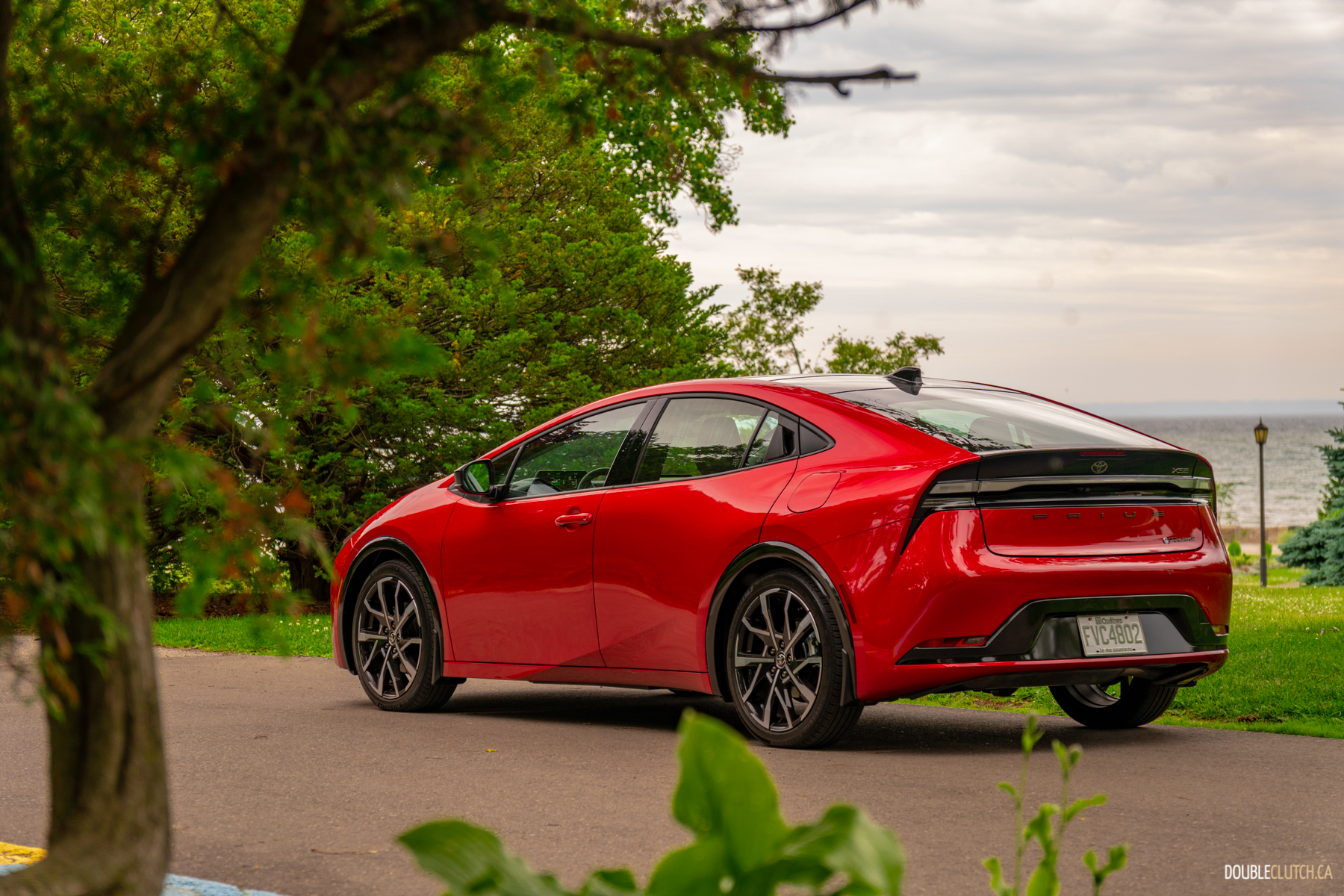
Another thing that people don’t like to talk about is that EVs typically don’t ride or handle all that well. Controlling all the added mass of the battery is a significant engineering challenge that demands compromise. The Prius Prime doesn’t have that problem, and as a result it rides really well. By the same token, it handles itself well, with a very natural and satisfying cornering feel that is, dare I say, almost fun. Less rolling resistance on the tires and a slippery shape means there’s very little wind and road noise. The Prius Prime a terrific mile-muncher that can go forever without worry, and even have fun doing it.
The Prius put itself on the map by encouraging people to think differently about cars and energy use. It’s more relevant than ever now, despite — or perhaps because of — the recent ravenous adoption and subsequent rejection of EVs. With its sultry shape, impressive performance, and luxe accommodations, the 2024 Toyota Prius Prime encourages all of us to think differently about this humble eco-warrior. Turns out, there’s room for some fun and overall cool factor in its pervasive sensibility after all.

